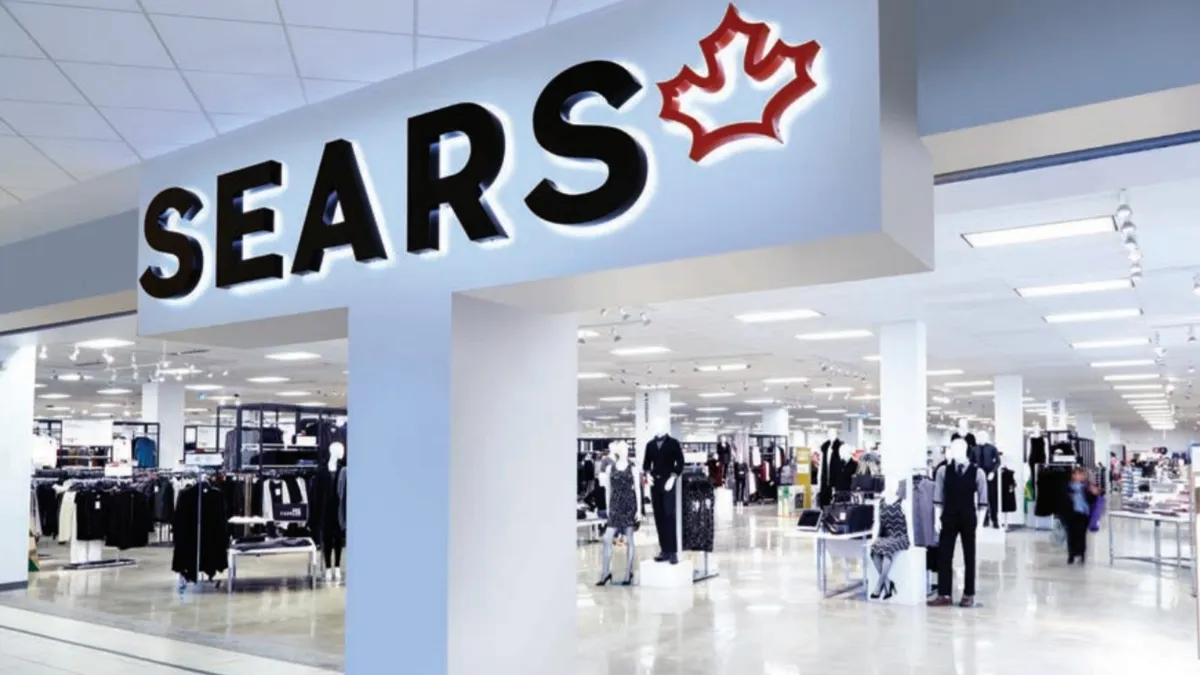Dive Brief:
-
Sears Canada Executive Chairman Brandon Stranzl is stepping down to pull together a bid for the company, according to an internal memo obtained by CBC News.
- In June Sears Canada said it had filed for creditor protection under Canadian law with a plan to downsize and reemerge as a going concern. In July the company faced the ire of employees who got wind of big bonuses for executives amid massive layoffs, according to another report from CBC News.
- In July ESL Partners, the hedge fund run by Sears Holdings CEO Eddie Lampert, and Fairholme Capital Management were said to be interested in propping up the company in some way, but those talks fell through, according to the Wall Street Journal. ESL and Lampert own about 45% of Sears Canada while Sears Holdings, which spun off Sears Canada in 2014, owns another nearly 12%. Fairholme owns 20.8% of the Canadian retailer.
Dive Insight:
Stranzl's departure to prepare a bid for the Canadian department store retailer is yet another twist in the complicated drama that has unfolded since Sears Canada sought creditor protection in June.
"In light of the approaching bid deadline and the focus required to assemble all necessary components of a bid, the board thought it was best for Brandon to focus exclusively on putting the bid together and step away from the day-to-day operations," the memo said, according to CBC.
It added that the goal of Stranzl's bid was to "facilitate a path for Sears Canada to emerge from CCAA and so that all of us can continue with the company's reinvention plans."
After five years of operating losses and negative cash flow, Sears Canada said in a June 13 release that "cash and forecasted cash flows from operations are not expected to be sufficient to meet obligations coming due over the next 12 months."
Even after the Canadian retailer issued going concern language, however, it said it had made progress in a turnaround effort. “Sears Canada rebuilt its front and back-end technology platform, redefined its brand positioning, revamped its product assortment, and rebooted its customer experience and service standards,” leading to an increase in same-store sales in back-to-back quarters, the company said.
But, the company added at the time, financial pressure from debt and other liquidity stresses had stalled the turnaround efforts and threatened Sears Canada's chances of survival.
While Sears Canada today operates separately from its former parent, it is still tightly connected to the man who runs Sears, through Lampert and Sears' stakes. The situation is an echo of the troubles of Sears Holdings south of the border, which is facing a well-publicized financial crisis of its own.
For now the parent of U.S. Sears and Kmart stores has managed to stave off bankruptcy. The company reported in its most recent quarterly statement that it managed to eke out a profit after a long string of losses. But Liquidity challenges remain: Ratings firms Moody’s and Fitch both see relatively high default risk in Sears despite emergency loans from Lampert and ESL, as well as the many waves of store closures and corporate cost cuts in recent years.
For the year so far, Sears Holdings plans to close more than 250 stores and will lay off more than 500 corporate employees. These moves follow massive asset sales, including its treasured Craftsman Brand to Black and Decker and hundreds of owned real estate properties to a venture chaired and partially owned by Lampert.
"It’s only a matter of time before the lights go out," Ken Perkins, president of retail research firm Retail Metrics Inc., said in an earlier interview with Retail Dive. "There really isn’t a way forward. … I don’t see how it can possibly survive long-term."















